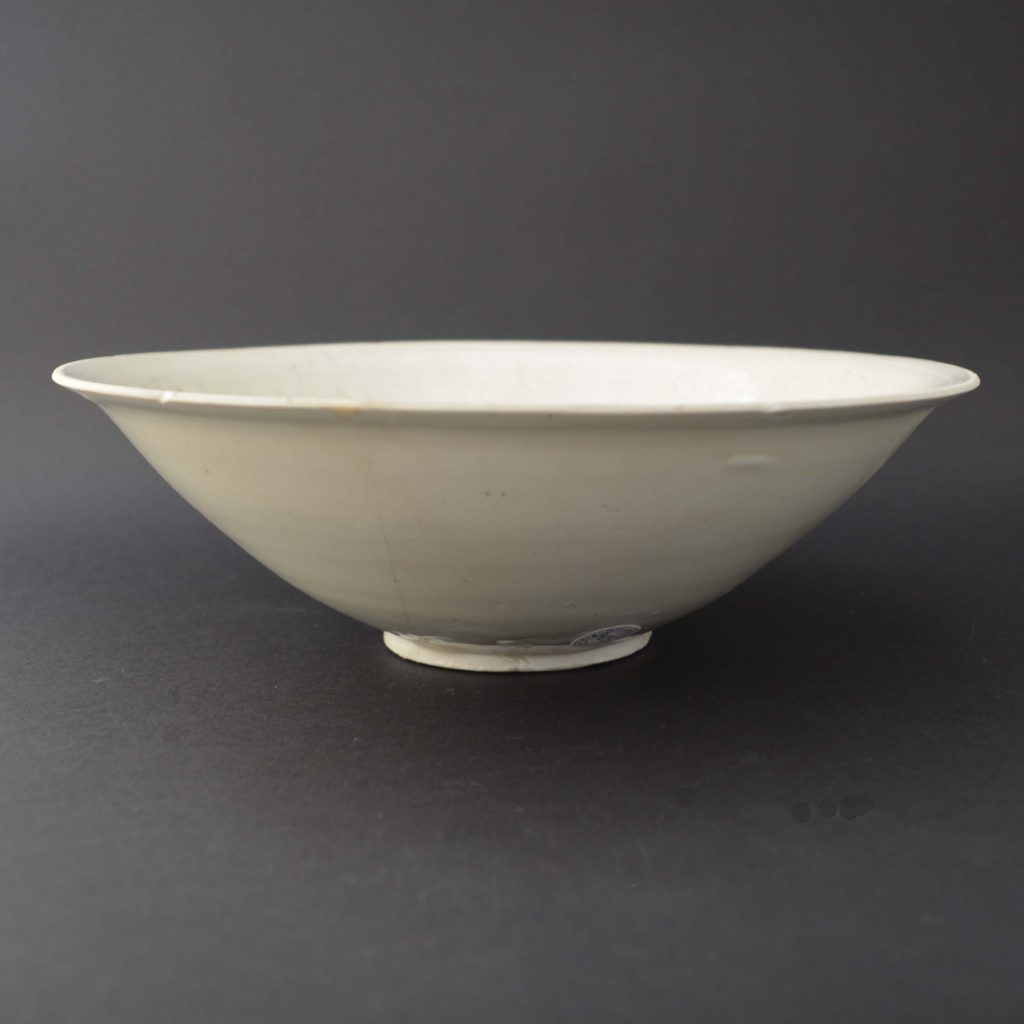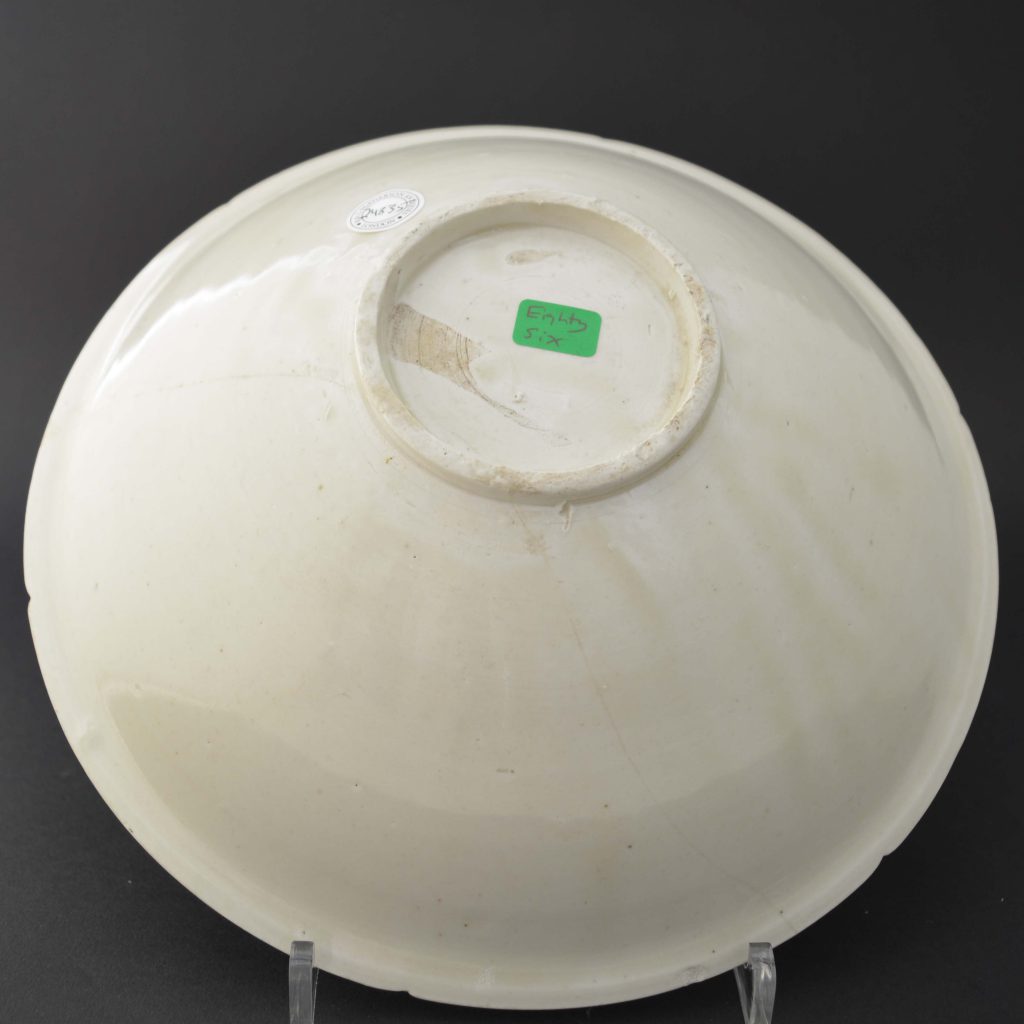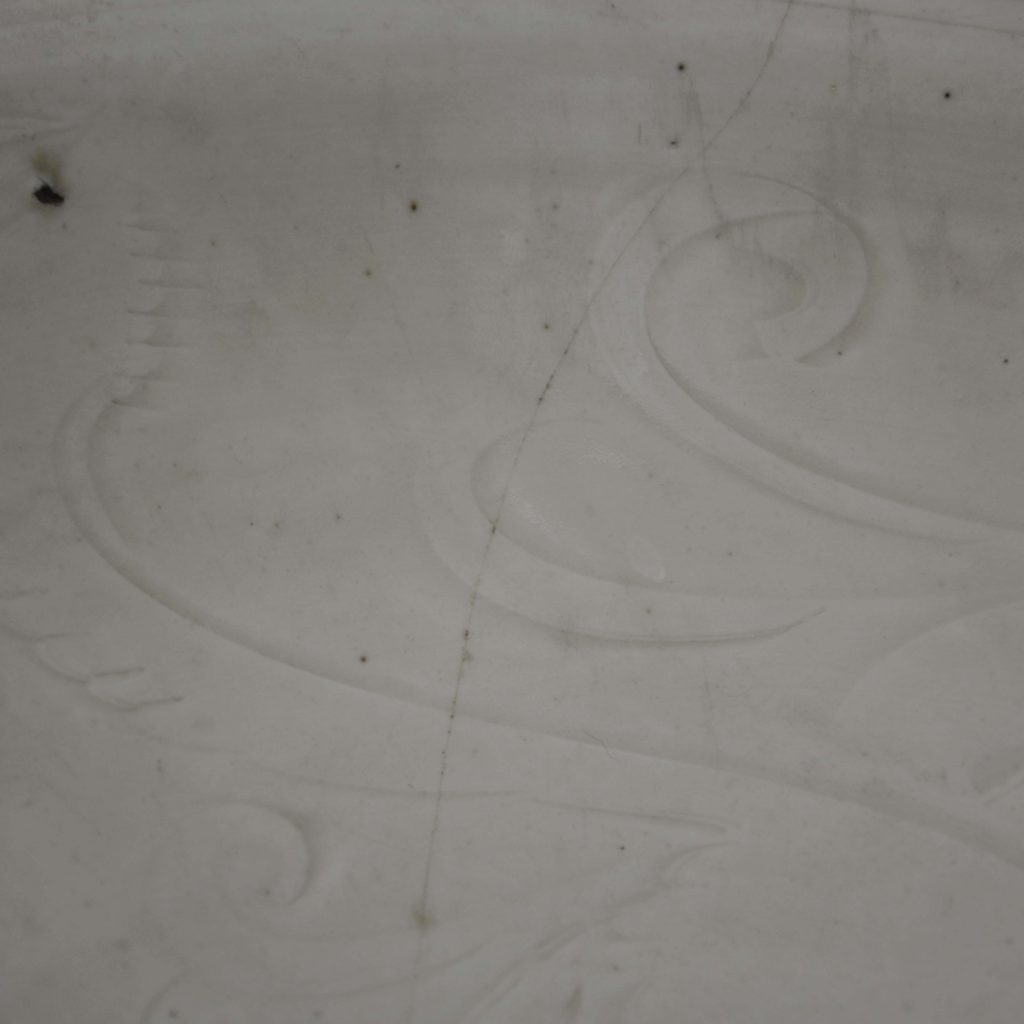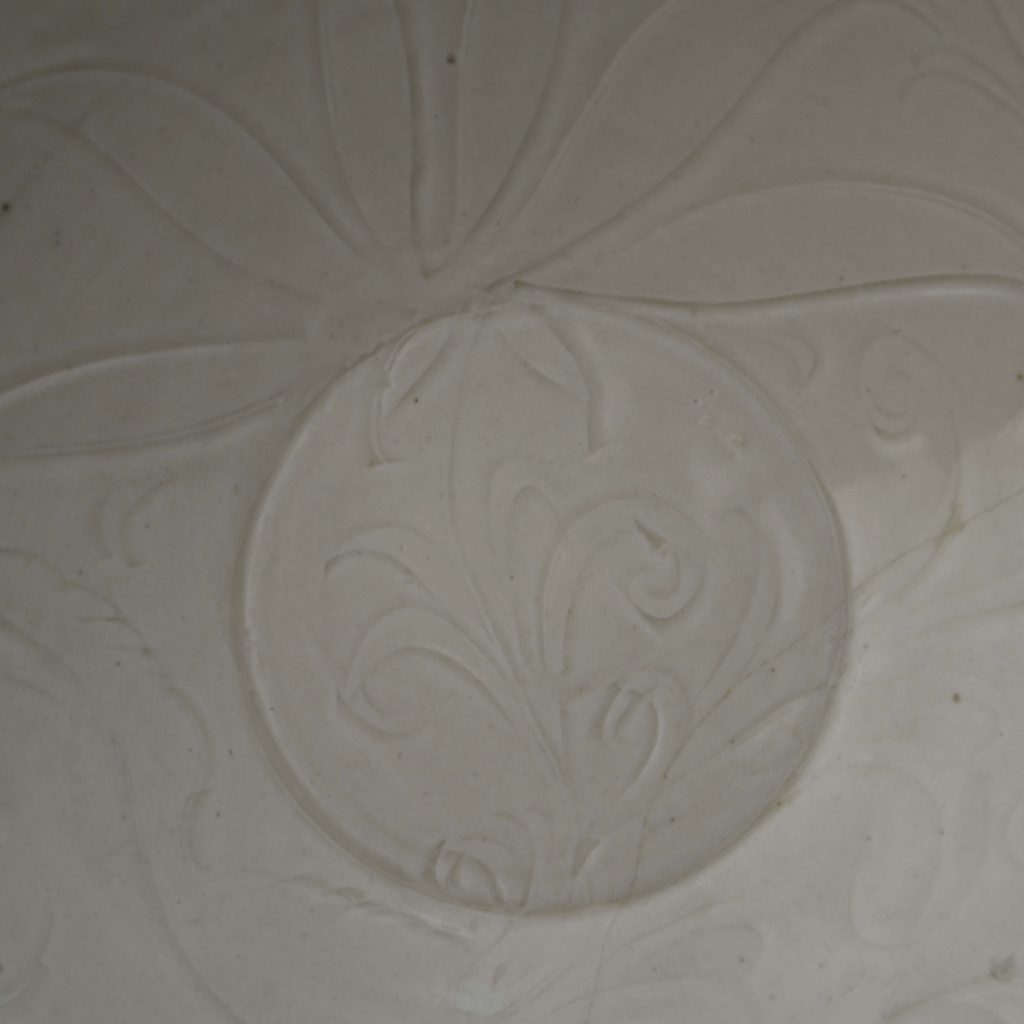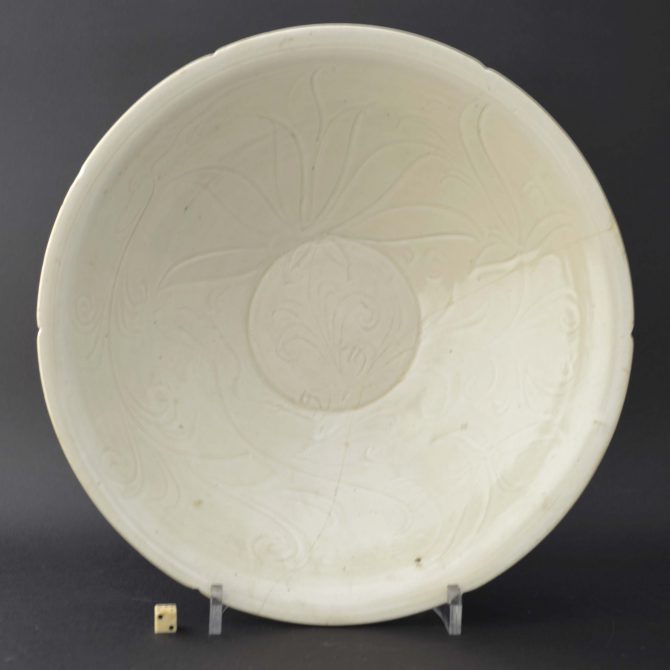
A Fine Large Ding Ware Bowl Carved with Lotus, Northern Song or Jin, 11th or 12th Century.
A fine carved Ding Ware bowl, Ding Kilns, Hebei Province, Northern Song, 960-1127, or Jin Dynasty 1115-1234. Skilfully and deftly carved with freely drawn flowering lotus.
- Condition
- N/A
- Size
- N/A
- Provenance
- NICOLAS THOMPSON COLLECTION : Nicholas de la Mare Thompson (1928-2010), the grandson of the author Walter de la Mare spent his career in publishing. He started at Nesbit where he was editor of the Janet and John series of children’s books but not all of his career was so safe. He wrestled with W.H. Smith over the content of Madonna’s raunchy Sex book on behalf of Paul Hamlyn’s Octopus Group and defeated Margaret Thatcher over Spycatcher. He could not bare dogma or hypocrisy. It was hardly surprising that as a committee member of the O.C.S. he had his own ideas. He read and could recite great swaths of the articles of the Society, he used this not to attack but to stimulate debate. He approached the Society in the same way as he approached his understanding of Chinese ceramics, by stripping it down and starting again using clear empirical thinking. He was very concerned the Society was open to all and was run for the benefit of all members. Nicholas came from a family of collectors, his love of oriental ceramics was broad but his focus was on early monochromes, especially those from the Song dynasty. He bought what he loved, what he thought had merit, not what was said to be good, and certainly not anything because it was fashionable. He didn’t have a stamp collectors approach, filling in the gaps of pre-existing ordered collection, rather he would react to an object, feeling it was right for his collection. Sometimes he wasn’t sure if it was right for his collection or not. He would then “borrow” pieces and live with them, other times he would ask his wife Caroline, who’s eye he trusted, if he should keep the piece or not. He was amused because I was often able to know if he would keep a piece before he did. We discussed “pots” endlessly, he loved to talk about ceramics with a wide variety of people, and enjoyed the company of others on O.C.S. trips as well as in discussion groups or anywhere else. Later on he combined his love of Chinese ceramics with his love of books by extending his library to include rare early books, he used these to trace the development of collecting and scholarship in the 19th and early 20th century. He was fascinated by earlier scholarship, what was not understood but also what they understood and we have lost. He was always reading and wanted to know more right up to the end, he didn’t see impending death as a barrier to knowledge or indeed collecting. The week before he died he questioned, if only for a second, whether it was too late to buy another pot for the collection. He concluded it was not, he was a true collector. Nicolas died on the 25th of April 2010 at the age of 82 after living with cancer for two years. He leaves behind his energetically supportive wife Caroline and his three children. He was a kind, gentle and incredibly civilised man with a very sharp mind and dry sense of humour, he was passionate about the Society, its aims and its members. He was an incredibly supportive and thoughtful friend and is very much missed .
- Stock number
- 24835
Information
Ding Ware :
Production of Ding ware began late in the Tang dynasty in Quyang county, Hebei province and was closely associated with Xing ware. During the Five Dynasties (906-960) Ding ware developed into its own distinct style and by the Northern Song dynasty the Ding kilns were producing some of the most successful porcelains in China. Ding ware is characterized by its ivory coloured body, clear honey-brown glaze, copper bound rim, and “tear drops” which run down the outside of its wares. Decoration of Northern Song Ding ware was typified by elegant hand carved and incised designs with combed detailing; this contrasts with Southern Song Ding ware which tended to display densely moulded motifs. Due to Ding’s popularity many kilns produced their own version of the wares which are termed Ding-type wares; however, these wares differ in refinement of body and craftsmanship to those produced at the Ding kilns.
Lotus :
The lotus is one of the most important symbols in the Chinese art. This Buddhist emblem is a symbol of purity, as the perfect flower grows out of muddy ponds without a stain. The words for lotus in Chinese has the same meaning as to bind, connect (in marriage). It is one of the Eight Auspicious Symbols of Buddhism. It is the flower used to represent summer.
